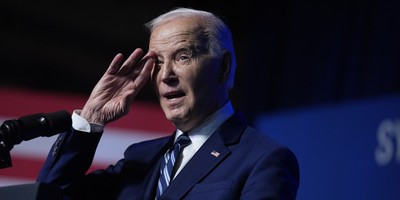In his 2018 State of the Union address, President Trump promised to move more Americans from welfare to work, from dependence to independence, and from poverty to prosperity. This year, on December 4, he delivered on that promise, finalizing one of the biggest welfare reforms in a generation.
For more than 20 years, the law has said that able-bodied adults on food stamps should work, train, or volunteer at least part-time. But states like California, Illinois, and New York have used loopholes and gimmicks to waive and ignore that law altogether.
When Congress created the work requirement, it gave the U.S. Department of Agriculture (USDA) the ability to waive the requirement in periods of economic crisis. It allowed states to seek temporary waivers of the work requirement where the unemployment rate was above 10 percent or where there was a demonstrated lack of job opportunities.
But for years, states have used loopholes in outdated regulations issued by prior administrations to waive these commonsense requirements. Today, 33 states and the District of Columbia have trapped millions of able-bodied adults in dependency with no expectation of work. Virtually all areas waived today have unemployment rates below six percent—with some having no unemployment at all. And with no work requirement in place, nearly seventy-five percent of able-bodied adults on the program doesn’t work at all.
Thankfully, there’s hope on the horizon. On December 4, Trump’s USDA finalized a rule to end the loopholes that state bureaucrats have exploited over the years, restoring the work requirement enacted more than two decades ago. Areas with objectively high unemployment or areas that lack a sufficient number of job opportunities will still be eligible for these temporary waivers, but states will no longer be able to ignore the requirement where unemployment is low and there are plenty of available jobs.
Recommended
The new rule could not come at a better time. The Trump economy is booming, and employers are absolutely desperate for workers at all skill levels. Employers report more than seven million open jobs, meaning there are more jobs sitting open than there are people seeking to fill them. Nearly three-quarters of these annual job openings require a high school education or less. What’s more, 87 percent of those jobs require no prior experience and eighty percent expect less than a month of on-the-job training, including millions that require no job training whatsoever.
The bold actions taken by the Trump administration will soon move millions of able-bodied adults from welfare to work, helping to fill those open jobs and boost the economy. Research shows that able-bodied adults who leave welfare after work requirements are implemented find work in more than 1,000 different industries, touching virtually every corner of the American economy. Able-bodied adults cycling out of welfare leverage those initial jobs in other jobs with even higher wages, quickly moving up the economic ladder. Their incomes soar, doubling and even tripling in just a few short years.
State bureaucracies administering the nation’s welfare programs have long needed to refocus their efforts on moving individuals to self-sufficiency and preserving resources for the most vulnerable. Thanks to President Trump, they will soon be required to do just that.
Jonathan Ingram is the vice president of policy and research at the Foundation for Government Accountability

























Join the conversation as a VIP Member